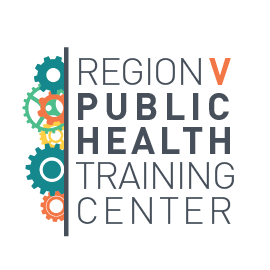By Andrew Wapner, DO, MPH, Ohio State College of Public Health
As public health practitioners, we rely on evidence in almost every aspect of our work. From understanding the causes of disease and the risk factors that predispose communities to both illness and injuries, to the planning, implementation, and evaluation of our programs and policies, the use of scientific information and evidence underlies the 10 essential public health services. In my 15 years in public health, the peer-reviewed literature base, published research findings subjected to a systematic review from experts in a specific field, has been a go-to source of evidence for me to describe problems, identify solutions, and justify a particular course of action to decision makers. And in many cases, this evidence was enough to advance our public health mission. But peer-reviewed literature is no longer as trusted a source of information as I once relied on, for several reasons.
First, peer-reviewed literature isn’t perfect. While peer review does help filter out low-quality studies, it doesn’t catch everything. A BBC News investigation highlighted this when it reported on a controversy involving the British Medical Journal, where articles about statin side effects were later found to contain unreliable data—even though they had passed peer review. And research itself is fraught with opportunities for errors, misinterpretations, or bias that can result in findings that don’t always reflect the truth.
Second, peer-reviewed literature is expanding faster than humans can keep up. According to the National Library of Medicine, PubMed added over 1.5 million new citations in 2023 alone, bringing the total number of indexed articles to more than 36 million. This growth reflects, in part, the increasing urgency to publish findings quickly. While this wealth of information is a valuable resource, it also makes it more challenging to stay current and to separate high-quality evidence from lower-quality or less relevant studies.
Third, we’re living in what has been called an “infodemic”—a term the American Psychological Association uses to describe the deluge of health misinformation that often eclipses both established and new scientific findings. Examples described in a 2024 APA Monitor on Psychology demonstrated how health misinformation has spread since COVID, both on the internet and through policymakers, leaving both young and old people skeptical of traditional sources of evidence and creating confusion about what information is “good” information.
To overcome these challenges, today’s public health practitioner has to be able to find evidence, assess its quality, and repackage it to overcome the information noise drowning out the voice of science.
In other words, it’s up to us to be able to critically appraise public health evidence to better inform ourselves, our communities, and our decision-makers.
Critical appraisal is the process of finding and evaluating research findings to apply to a specific population—in other words, it’s the process of finding the islands of truth in the ocean of information.
Yes, critical appraisal is about being skeptical of research findings, but it’s also about being smart and selective with the evidence you use to make decisions.
Critical appraisal involves the systematic approach to searching through considerable volumes of information to identify research that:
- Most relates to the specific question you’re looking to answer,
- Is designed to produce valid and consistent results, and
- Is applicable and transferable to the populations you’re serving.
Building these critical appraisal skills increases your understanding of the research and improves your practice:
- It helps you influence people to make better decisions: Whether you’re choosing an intervention or writing a grant, you can back your choices with solid, well-vetted evidence.
- It protects your community: By filtering out bad science, you help prevent harm and build trust.
- It supports adaptation and community humility: Not all research fits your local context. Appraisal skills help you determine what might work for your specific population.
- It builds confidence with you and others: When you understand the evidence, you can speak with authority and clarity—even when others are spreading discord.
The Region V Public Health Training Center is launching a new Critical Appraisal of Population Health Evidence course to provide basic skills on the critical appraisal process. Building off another introduction to Evidence-based Public Health, this training will allow you to:
- Explain the principles of evidence appraisal.
- Discuss the five steps to find and appraise evidence (Assess, Ask, Acquire, Appraise, Apply).
- Describe the different types of biases that impact the quality of evidence.
As public health practitioners, we cannot afford to let the evidence speak for itself anymore. We need to be proper stewards of the evidence on behalf of our communities and their leaders.
To learn more, check out these resources:
- “How to Reverse the Alarming Trend of Health Misinformation” – APA
- MEDLINE PubMed Production Statistics
- “How reliable are medical research checks?” – BBC News

